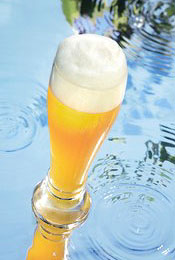 Are you a fan of wheat beers? Guest blogger and beginning homebrewer Josh Short shares some of the lessons he learned from his recent brew day.
Are you a fan of wheat beers? Guest blogger and beginning homebrewer Josh Short shares some of the lessons he learned from his recent brew day.————————————————————–
Summer is almost here and it’s time to brew something refreshing that even the biggest non-beer-lover will enjoy. No double IPA here — let’s brew a hefeweizen.
Hefeweizen is a south German style of beer. “Hefe” translates to “with yeast” and “weizen” means “wheat.” Hefeweizens have a low-hop bitterness, usually around 6-10 IBUs, and are unfiltered, meaning that the yeast stays in the beer when it’s served. Most hefeweizens have hints of cloves and bananas, which come from the hefeweizen yeast strain, and a cloudy golden, yellow-orange appearance.
I brewed a hefeweizen recently and wrote down some tips and tricks to help you as a beginning homebrewer. Hopefully I can keep you from burning your house down!
- Read your directions and then read them again. Write down each step and tape it to your microwave since it’s probably above your oven and it’ll always be close-by.
- Clean your kitchen. Yes, I’m sorry, but do all the dishes so you have an empty sink and make sure all your countertops are clear.
- Lay out all your materials and go through each step to make sure you have everything you need:
- 4-5 gallon brew pot with lid
- Fermenter (the plastic bucket without the hole at the bottom)
- Long spoon for stirring the wort
- Airlock
- Hydrometer
- Thermometer (a regular kitchen thermometer works, but you might want to upgrade to a floating thermometer)
- Sanitizer
- Towels
- Six gallons of bottled water
- Brewer’s Best Weizenbier Recipe Kit
- Optional – Specialty grains, mesh steeping bag for specialty grains, small pot for discarded specialty grains (more info below)
- 10+ pounds of ice or a wort chiller
- Oven mitts
- Kitchen sink drain plug
- Pencil/pen for taking notes
- This step is optional, but if you’ve made a few batches before or want to be adventurous it is a fairly simple way to enhance the flavor to your brew. When you’re heating up water for the boil, grab some specialty grains and steep them in your water at 150 degrees for 15 minutes before adding your malt extract. I used half a pound of pilsner malt and half a pound of malted wheat. Make sure to take in the amazing aromas the steeping grain will give off! Here’s some additional information since it probably won’t be in your kit instructions:
- Most likely your grains will already be cracked. If they are not, run them through a corona mill or roll over them with a rolling pin or beer bottle on a cutting board.
- Pour grains into steeping bag and tie off the end. Do this over a cutting board because the grains might leave a fair amount of dust on your counter.
- Place bag into 150 degree water for 15 minutes.
- Watch the color of the water turn a golden color and enjoy the aroma. Don’t be frightened if flakes of grain escape from the steeping bag. It’ll settle to the bottom of your fermenter and you leave the bottom inch or so in the fermenter when you siphon it to the bottling bucket in a few weeks.
- After 15 minutes, remove steeping bag and place it aside in a small pot. You’re done with the grains and the pot, so put it to the side and let it cool and drain into pot before discarding. There are a ton of ways to recycle the spent grain but for a beginner, focus on the brewing for now.
- Before adding the malt extract, turn your sink faucet to hot and run one can of your liquid malt extract (LME) under it for two to three minutes. This makes it much easier to pour from the can.
- Once you get your first set of malt extract and hops into your brew pot, pat yourself on the back because there’s no stopping now! Find a place to lean on near your oven because you’re going to be there for a bit.
- Now that you are boiling your malt extract and hops, DO NOT LEAVE THE OVEN’S SIDE! Stand/Lean/Sit there and watch the boil. If you see it all starting to rise very quickly, turn the burner off, grab your oven mitt and move the pot to another burner. You just prevented a boil over. This shouldn’t happen if you are attentively watching the pot.
- Once you are done brewing and have moved your cooled wort into the fermenter, take your dry yeast packet and sprinkle it over your wort. You can prepare your yeast in a number of ways which are noted in other posts, but as a beginner homebrewer this method works just fine.
- When inserting your airlock, gently twist it back and forth into the hole in the fermenter lid. Do not jam it straight down as I did unknowingly during my first batch, splitting the plastic airlock into pieces!
- Wait patiently while the beer ferments. In as little as two weeks, you’ll have two cases of delicious beer for you and friends!
I hope the tips above will help you keep your kitchen intact! Feel free to leave comments and questions below. Cheers!
Josh Short is a beer blogger “on a mission to learn the art of craft beer.” Check out his blog, Short on Beer, to join him on his journey.

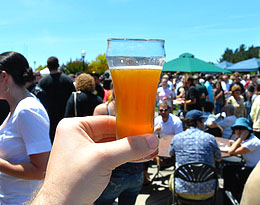 Homebrew festivals are quickly becoming a popular way to share the art of homebrewing with others. There are several possible formats. Some festivals just ask brewers to donate the beer, while others require a small fee to participate. Some homebrew festivals raise money for good causes, and many include a competition where the winning brewers can earn prizes, exposure, or even the opportunity to brew their winning beer with a professional.
Homebrew festivals are quickly becoming a popular way to share the art of homebrewing with others. There are several possible formats. Some festivals just ask brewers to donate the beer, while others require a small fee to participate. Some homebrew festivals raise money for good causes, and many include a competition where the winning brewers can earn prizes, exposure, or even the opportunity to brew their winning beer with a professional.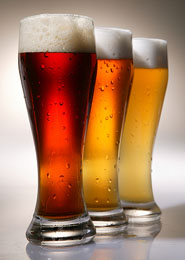 In celebration of the fun, social hobby that is homebrewing, the
In celebration of the fun, social hobby that is homebrewing, the 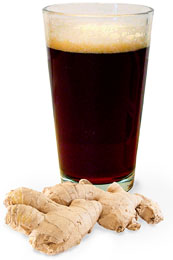 Before hops were a common ingredient, beer was flavored with all kinds of herbs, spices, vegetables, flowers, and roots. One such ingredient was ginger, the intensely flavored root frequently used in cooking Indian food and ginger bread cakes. In one of my favorite new brewing books,
Before hops were a common ingredient, beer was flavored with all kinds of herbs, spices, vegetables, flowers, and roots. One such ingredient was ginger, the intensely flavored root frequently used in cooking Indian food and ginger bread cakes. In one of my favorite new brewing books, 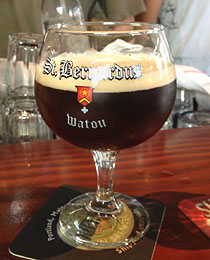 One could easily write a book on this subject and still not have a complete answer to this question. Belgium has a very long, creative, and artisanal brewing tradition that makes it difficult to lump all Belgian beers into a single category. Whereas in Germany, the Reinheitsgebot required brewers to only use barley, water, and hops, there was no such law in Belgium. Brewers in Belgium were allowed to experiment and continue to do so. As a result, there is a huge variety of beers being made in Belgium, and essentially no restrictions on what can go into them.
One could easily write a book on this subject and still not have a complete answer to this question. Belgium has a very long, creative, and artisanal brewing tradition that makes it difficult to lump all Belgian beers into a single category. Whereas in Germany, the Reinheitsgebot required brewers to only use barley, water, and hops, there was no such law in Belgium. Brewers in Belgium were allowed to experiment and continue to do so. As a result, there is a huge variety of beers being made in Belgium, and essentially no restrictions on what can go into them.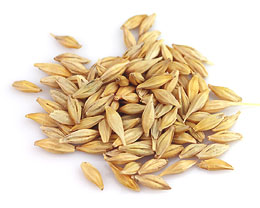

 Once you’ve started brewing at home and made your first batch of home brew, you’re going to have to find something to store it in. The two main options are either
Once you’ve started brewing at home and made your first batch of home brew, you’re going to have to find something to store it in. The two main options are either 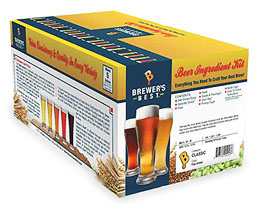
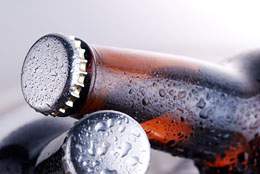 When it comes to storing your homemade beer, you’re going to need more than just a couple of pitchers. You’ll need to decide whether you’ll be bottling beer, or
When it comes to storing your homemade beer, you’re going to need more than just a couple of pitchers. You’ll need to decide whether you’ll be bottling beer, or  When people are first learning how to brew beer, one of their first questions is always, how long does the homebrewing process take? How long it takes to make the beer, and how long it will be before you can start drinking your homemade beer are two different things. But altogether, from the time you first start mixing your own beer, to the time you’re cracking open your first bottle, it should only be a matter of weeks.
When people are first learning how to brew beer, one of their first questions is always, how long does the homebrewing process take? How long it takes to make the beer, and how long it will be before you can start drinking your homemade beer are two different things. But altogether, from the time you first start mixing your own beer, to the time you’re cracking open your first bottle, it should only be a matter of weeks.